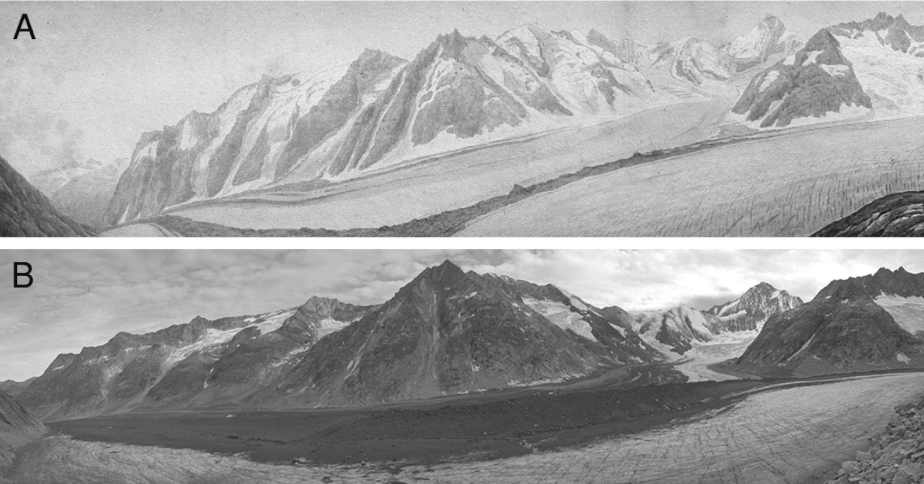- Lithographs are artworks created by printing ink on a flat stone or metal surface. Lithographs of the Alps made during the Little Ice Age commonly depict large glaciers and areas covered in ice, such as image A below, which shows the Unteraar Glacier in Switzerland. Present-day photographs, such as image B below, show that the glaciers have retreated and the same areas are covered in far less ice.

(A) Drawing of the lithograph Panorama de la mer de glace du Lauteraar et du Finsteraar–Hôtel des Neuchâtelois (1842) by Jacques Bourkhardt; (B) Photograph of the same area (2004) (from Steiner, D., et al., 2008).
How is this related to climate?
- The Unteraar Glacier was much larger during the Little Ice Age than it is today. Glaciers expanded during the Little Ice Age due to an average global drop in temperatures.
Further Exploration
- Glaciers have captivated artists since at least the 17th century and are featured in many works across time, cultures and media. In the 19th century, artists were commonly hired to create scientific documentations of glaciers, but artworks depicting glaciers have also been used to show appreciation for the farthest reaches of the natural world and, more recently, speak against global warming.
References and additional resources
- “Lithography.” Merriam-Webster. (n.d.). https://www.merriam-webster.com/dictionary/lithography.
- Prothero, D. R. and Dott, R. H. Evolution of the Earth (8th ed). New York, McGraw-Hill Education, 2010.
- Steiner, D., et al. “Two Alpine glaciers over the past two centuries: A scientific view based on pictorial sources.” Darkening Peaks: Glacier Retreat, Science, and Society, edited by Orlove, B., et al. University of California Press, 2008.
